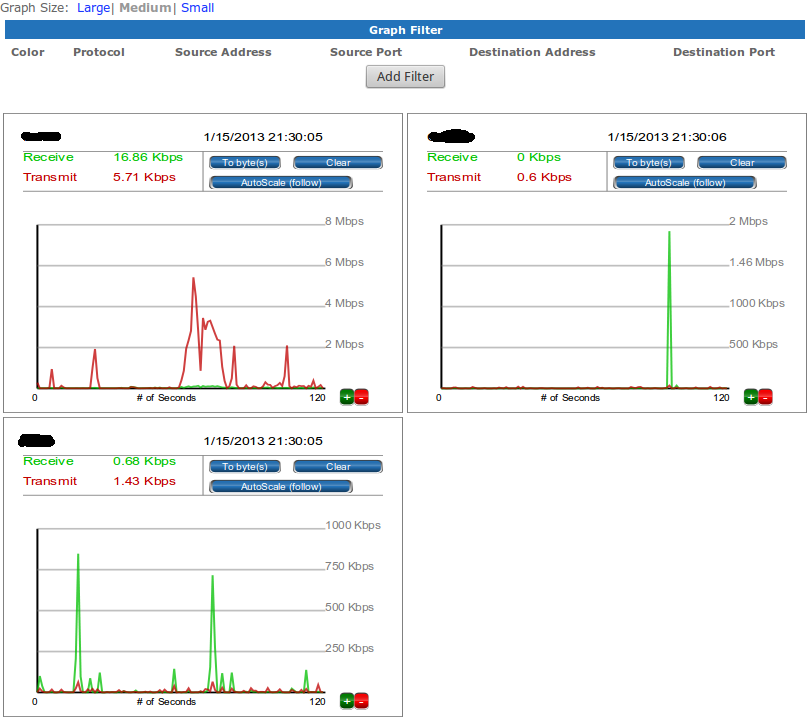We ran into an issue at work where we needed faster Internet (or more bandwidth,)… The prices for our current ISP’s were higher than we had hoped for faster Internet, but we would like fail over as well as additional load balancing. With teachers and students depending on the Internet so much we cannot afford not to have the Internet working well. Our current provider’s downtime was unrealistically low (single digit hours a year) and we were VERY happy with the service. Increasing our speed with that provider was not very cost beneficial compared to other providers. So we started considering load balancing/fail-over with a second or third provider.
We investigated several commercial options as well as potential open source options. We LOVE open source but something as critical as this we wouldn’t want to have to ever really troubleshoot. We looked at solutions that were computers with specialty designed OS’s, as well as specialty hardware.
We had discussed deeply whether a standard computer hardware (with replaceable hardware) would be better than a hardware device designed to do what we wanted. Ultimately we came to the conclusion that the software or features would make the decision.
We ended up going with a Ecessa Powerlink 600 which is a load balancer for both inbound and outbound connections,WAN fail-over, and Ecessa fail-over if two units are purchased. We get the device setup with our current single 11Mb/11Mb fiber connection and were dieing to get more connections on the device. A few weeks later we were able to get 100Mb/5Mb cable connection in and immediately saw the differences and how Ecessa was load balancing between the two connections. Within the first week we had also had notices of our new cable modem dropping in and out however end user experience was not effected.
We were able to eventually load balance:
- 11Mb down/11Mb up extremely reliable but expensive fiber connection
- 50Mb down/50Mb up reliable wireless connection
- 100Mb down/5Mb up least reliable cable connection
This provides us with a total usable bandwidth of 161Mb down/67Mb up, with the fastest potential download speed of 100Mb down, 50Mb up depending on the WAN interface you happen to fall on. This also provides fail-over on any of the connections so that we can immediately fail-over to another connection without major interruption to end-users.
This link is also capable of load balancing incoming connections if set to an authoritative DNS server however we are currently not implementing that due to current network structure and time involved to implement that. Although the time is not much, we are pressed to finish other projects right now. That being said, we will be implementing this in the future.
I can say that installation was EXTREMELY easy with tech support. Without the tech support the device would not be as straight forward as most would hope, advanced users ‘could’ struggle to get it setup. We provided some simple information and they sent us a configuration file which was uploaded to the device. They pretty well configured the device remotely and sent us the file.
We got it up and running and it has been running fantastic for over 100 days; even during ISP failures on our cable modem. Our end users do not notice any issues when we fail-over.
When you setup Ecessa WAN links you type in the IP’s of 3 hosts to ping continuously. When 2 of them fail the PL600 fails that link until they come back. This ensures a good solid reliable connection for the end users. We see out links during the day sporadically fail-over from time to time and have not had any complaints from end users.
During troubleshooting we can VERY easily see what WAN links are up and down, if there were problems, and what speeds are. 
Jan 15 21:04:06 PowerLink PL600_00250725: Web authentication succeeded for root from ::ffff:68.190.160.87 Jan 15 19:11:05 PowerLink PL600_00250725: Web authentication succeeded for root from ::ffff:68.190.160.87 Jan 14 15:02:28 PowerLink PL600_00250725: Link Link3: Testpoint #1: Status change: PASS Jan 14 15:02:12 PowerLink PL600_00250725: Link Link3: Testpoint #1: Status change: FAIL Jan 14 14:43:17 PowerLink PL600_00250725: Link Link3: Testpoint #3: Status change: PASS Jan 14 14:43:00 PowerLink PL600_00250725: Link Link3: Testpoint #3: Status change: FAIL Jan 14 14:31:08 PowerLink PL600_00250725: Link Link3: Testpoint #2: Status change: PASS Jan 14 14:30:50 PowerLink PL600_00250725: Link Link3: Testpoint #2: Status change: FAIL Jan 14 12:45:59 PowerLink PL600_00250725: Link Link3: Testpoint #2: Status change: PASS Jan 14 12:45:41 PowerLink PL600_00250725: Link Link3: Testpoint #2: Status change: FAIL Jan 14 04:33:55 PowerLink PL600_00250725: Link Link1: Testpoint #3: Status change: PASS Jan 14 04:33:48 PowerLink PL600_00250725: Link Link1: Testpoint #1: Status change: PASS Jan 14 04:33:46 PowerLink PL600_00250725: PowerLink refresh - done Jan 14 04:33:46 PowerLink PL600_00250725: PowerLink refresh - status Jan 14 04:33:46 PowerLink PL600_00250725: Link: Link1: Status change: UP Jan 14 04:33:46 PowerLink PL600_00250725: Link Link1: Testpoint #2: Status change: PASS Jan 14 04:33:44 PowerLink PL600_00250725: PowerLink refresh - done Jan 14 04:33:44 PowerLink PL600_00250725: PowerLink refresh - status Jan 14 04:33:44 PowerLink PL600_00250725: Link: Link1: Status change: DOWN Jan 14 04:33:41 PowerLink PL600_00250725: Link Link1: Testpoint #1: Status change: FAIL
We have found the Powerlink Extremely effective and HUGE cost savings. In about 1 year the device will pay itself off compared to if we would purchase a very fast reliable Internet connection. We are looking for a second to setup as a redundant fail-over in the years to come.


Recent Comments